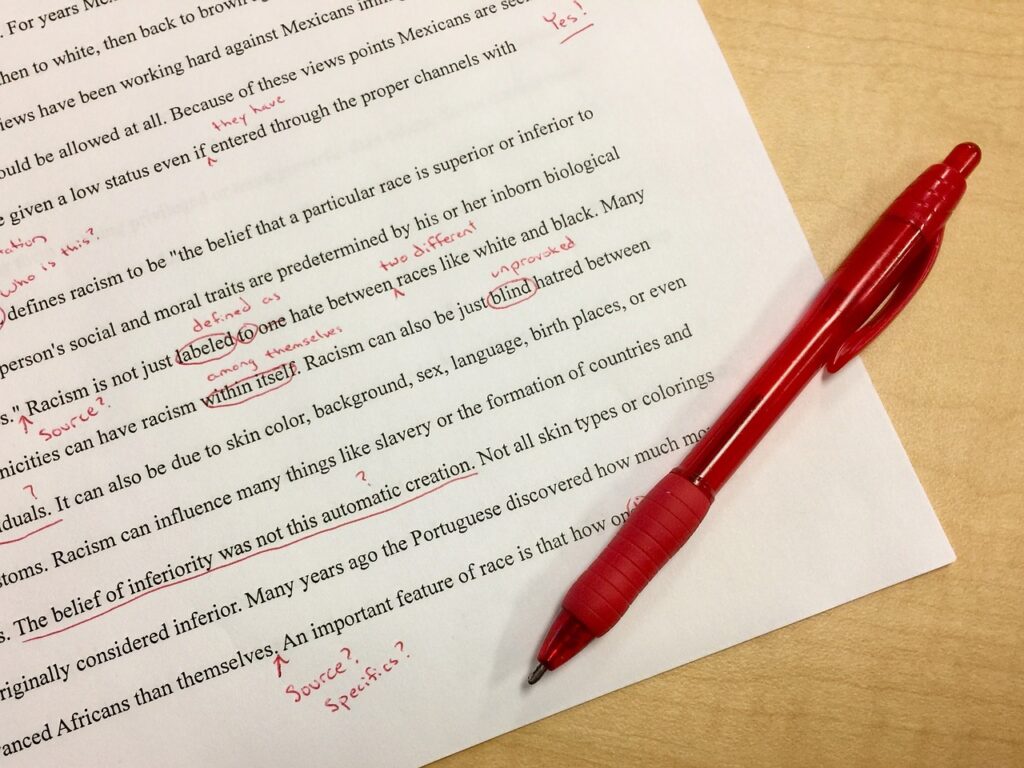
Ghostwriting is one of the truest forms of collaboration there is. On one side, there’s the story expert: the person who has the compelling story that simply has to be told for whatever reasons the person wants to tell it (also known as the client). Joining that person is the storytelling expert, the ghostwriter, who knows how to take that compelling story and tell it in the best way possible.
It’s a total team effort, and that includes during the sloppiest, messiest, rawest, ugliest part of the process: the first draft.
The first draft is just that: The first attempt to tell the story. It is always incomplete, rough, unedited, and a far cry from what will eventually be published. Callie Sutcliffe, on The Write Practice, defined it this way: “a pile of words thrown together.”
A first draft is like a birth, according to Lucy Mitchell: beautiful, messy, and chaotic. And Michael Rowe says, “My only goal when writing a first draft of anything is simply to put words on the page.”
From the lump of coal that is this disaster of a first draft will eventually emerge a diamond of proper carat, cut just right, with all of the desired color and clarity the client wants.
But first, it sucks. A client might look at it and think, “What am I paying this ghostwriter for? This is so far away from what I want.”
Exactly. Barbara Davis said it’s like “trying to put lipstick on a skeleton.”
But that’s the point. You have to start somewhere, right?
A ghostwriter needs to set expectations. Explain to the client that the first draft is always lousy, that it will get better will each draft. To expect perfection (or something close to it) so early is unrealistic.
The ghostwriter needs to explain to the client what is in the first draft and what isn’t. Perhaps the ghostwriter just wants to ensure the facts are correct. Maybe capturing the emotional scenes, motivations, and scenarios are what the first draft is about. Whatever it is, (and whatever it isn’t), the client needs to be told in advance of receiving the first draft so the client isn’t shocked when it fails to meet any lofty expectations the client might have.
Clients sometimes think a first draft will closely resemble the finished manuscript. In fact, the first draft is more like a movie screenplay: It goes through a lot of edits, fixes, changes, additions, and deletions before it’s done. I’ve seen online sources say a book’s first draft is as little as 20% done.
Alyssa Matesic equates it to the metaphor of Michelangelo having a slab of marble and chipping away at it until the final sculpture is revealed.
The first draft is also a place where client and ghostwriter ensure the story is on track. The ghostwriter might have thought the story was a comedic romp, but the clients envisioned a serious story of enduring friendship. The first draft gives the collaborators a chance to reassess and recalibrate to get everyone on the same page. But within that mess of a draft, the story should still be recognizable because there was an outline the ghostwriter followed.
A ghostwriter must be willing to continue to collaborate with the clients and make the next draft better. Similarly, the clients can’t just walk away because the first draft was so raw. They need to work with the ghostwriter to fix that which needs to be fixed. It’s the only path to improvement.
As Paul Groessel wrote on storytellermn.com, “Quality prose always starts with a good idea that you wrangle into a rough draft. It never spills out of the brain a fully-formed article, ready to send into the world.”
If you would like to discuss this, any other post, or find out more about hiring me as your ghostwrtier in Denver, feel free to leave a message. Just click on the Contact tab and use the form.
Let's Start A New Project Together
Contact me and we can explore how a ghostwriter or editor can benefit you.
